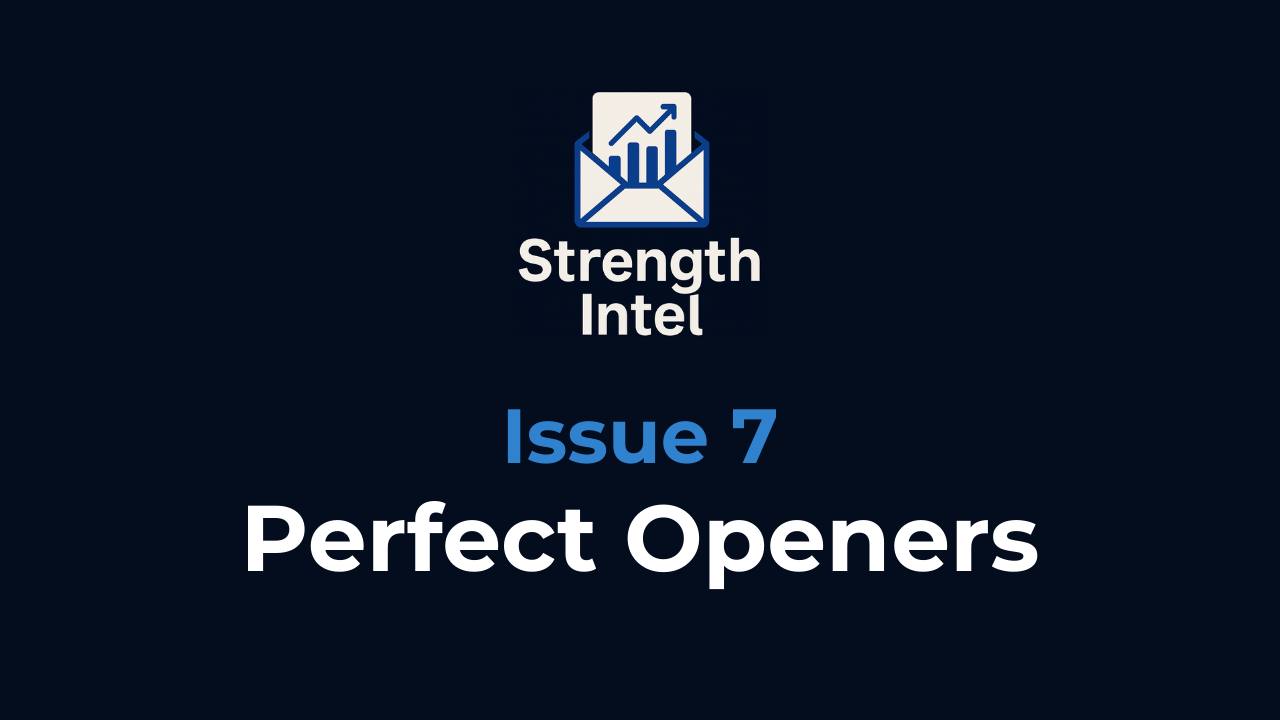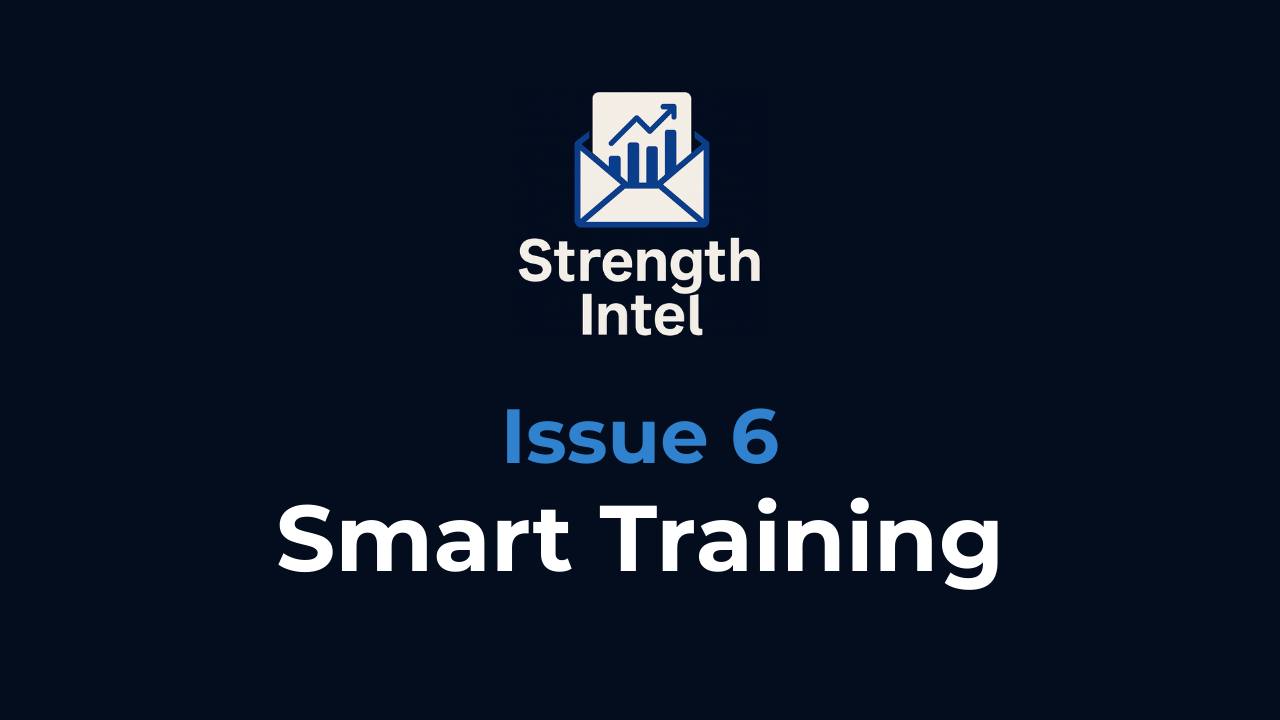Strength Intel - Issue 5
The 10,000-Hour Shortcut
I recently received an email from a coach in Manchester. He'd been trying to implement velocity-based training for eight months, piecing together information from YouTube videos, forum posts, and scattered research papers. Despite his best efforts, he still felt like he was "making it up as he went along."
His frustration was palpable: "I know this stuff works, but I can't figure out how to make it work consistently."
This perfectly captures the fundamental problem facing anyone trying to master velocity-based training (VBT) today: the information exists, but it's fragmented, contradictory, and often lacks the practical context needed for real-world application.
Today marks the end of that problem.
Velocity Programming Mastery is now officially open for enrollment.
The Education Gap
Here's what's broken about learning VBT in 2025: you can find individual pieces of the puzzle scattered across dozens of sources, but nobody has assembled the complete picture in a logical, systematic way.
You'll find a research paper explaining velocity-load relationships, but not how to use that information with a lifter who's hit a plateau. You'll find forum discussions on velocity zones, but not guidance on transitioning someone from RPE without derailing their progress. You'll watch equipment demonstrations, but not see how the same principles apply whether you're using a £20 app or £2,000 hardware.
The result? Coaches and lifters spend months—sometimes years—trying to reverse-engineer a methodology that should take weeks to master with proper guidance.
What Systematic Education Actually Looks Like
This course represents something that has never existed before: 40 comprehensive lessons that take you from complete novice to confident VBT programmer, organised across 9 systematic modules with a logical progression that mirrors how elite coaches actually think about training.
Module 1: Course Foundations
How to learn effectively, extract maximum value from the material, and apply concepts immediately.
Modules 2-3: Technical Mastery
What velocity actually means, how to measure it reliably, and the physics relationships that govern strength training (explained without requiring an engineering degree).
Modules 4-5: Autoregulation Systems
The complete spectrum of fatigue management methods, from basic RPE implementation to advanced velocity-based protocols. You'll understand not just what each method does, but when and why to use each one.
Modules 6-7: Practical Implementation
Velocity profiles, technical execution scoring, and the systematic transition protocols that prevent lifter confusion and programme disruption.
Module 8: Advanced Applications
Competition preparation, client case studies, and the decision-making frameworks that separate good coaches from exceptional ones.
Module 9: Real-World Case Studies
Complete programmes, including the actual velocity-based protocol built for an IPF competitor preparing for Sheffield 2025.
Lessons are immediately available upon enrollment.
Learn at your own pace, rewatch any lesson as many times as needed, and return to concepts whenever you need a refresher.
The Credentials Behind the Curriculum
This isn't theoretical knowledge assembled from research papers. Every lesson, template, and assessment tool has been developed through:
-
25+ years of hands-on coaching experience
-
5 years as the Head Coach of the Great Britain IPF Team
-
Personal competition experience as a two-time IPF World Classic competitor
-
Documented success with multiple World, European, and National Champions
The case studies aren't hypothetical examples—they're actual programmes used with real athletes and clients that have achieved significant results.
The Implementation Advantage
Most VBT education stops at concept explanation. This course is built around immediate application. You'll receive:
Complete Templates: Ready-to-use programmes that can be implemented immediately with any measurement system.
Assessment Tools: Systematic evaluation methods for tracking progress and making programme adjustments.
Transition Protocols: Step-by-step processes for moving lifters from subjective to objective methods without disrupting their progress.
Real Competition Programmes: The actual periodisation and velocity protocols used with elite athletes preparing for major competitions.
Technology-Agnostic Approach
Whether you're working with smartphone apps, Linear Position Transducers, or anything in between, the principles remain consistent. This course teaches you to think about VBT systematically, not just operate specific equipment.
The methodology scales from budget-conscious implementations to high-end laboratory setups, ensuring your education remains valuable regardless of your current or future equipment choices.
The Investment Calculation
£499 provides lifetime access to the complete 40-lesson curriculum, all templates and assessment tools, real competition case studies, and ongoing content updates.
This course provides you with comprehensive, systematic education that will transform your entire approach to programming.
Why This Matters Now
Every month you continue using subjective assessment methods is another month of suboptimal programming decisions. The gap between coaches who understand systematic VBT implementation and those still relying on traditional methods continues to widen.
Early adoption provides a significant competitive advantage, whether you're coaching others or optimising your own training. The lifters and coaches who master these methods first will be the ones setting new standards in their respective categories.
Ready to Close the Gap?
The systematic approach to VBT education you've been waiting for is finally here.





